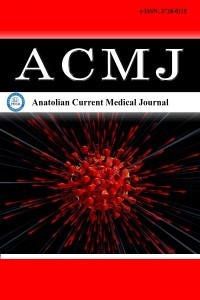1.
Collet TH, Gussekloo J, Bauer DC, et al. Subclinicalhyperthyroidism and the risk of coronary heart disease andmortality. Arch Intern Med. 2012;172(10):799-809.
2.
Palacios SS, Pascual-Corrales E, Galofre JC. Management ofsubclinical hyperthyroidism. Int J Endocrinol Metab. 2012;10(2):490-496.
3.
Fazio S, Palmieri EA, Lombardi G, Biondi B. Effects of thyroidhormone on the cardiovascular system. Recent Prog HormoneRes. 2004;59(1):31-50.
4.
Cappola AR, Fried LP, Arnold AM, et al. Thyroid status,cardiovascular risk, and mortality in older adults. JAMA.2006;295(9):1033-1041.
5.
Kaminski G, Makowski K, Michalkiewicz D, et al. Theinfluence of subclinical hyperthyroidism on blood pressure,heart rate variability, and prevalence of arrhythmias. Thyroid.2012;22(5):454-460.
6.
Galetta F, Franzoni F, Fallahi P, et al. Changes in autonomicregulation and ventricular repolarization induced by subclinicalhyperthyroidism. Biomed Pharmacother. 2010;64(8):546-549.
7.
Aweimer A, Schiedat F, Schöne D, et al. Abnormal cardiacrepolarization in thyroid diseases: results of an observationalstudy. Front Cardiovasc Med. 2021;8:738517.
8.
Bazett HC. An analysis of the time-relations of electrocardiograms.Ann Noninvas Electrocardiol. 1997;2(2):177-194.
9.
Tse G, Gong M, Wong WT, et al. The Tpeak− Tend interval asan electrocardiographic risk marker of arrhythmic and mortalityoutcomes: a systematic review and meta-analysis. Heart Rhythm.2017;14(8):1131-1137.
10.
Lang RM, Badano LP, Mor-Avi V, et al. Recommendations forcardiac chamber quantification by echocardiography in adults:an update from the American Society of Echocardiography andthe European Association of Cardiovascular Imaging. Eur HeartJ-Cardiovasc Imaging. 2015;16(3):233-271.
11.
Schiller NB, Shah PM, Crawford M, et al. Recommendationsfor quantitation of the left ventricle by two-dimensionalechocardiography. J Am Soc Echocardiography. 1989;2(5):358-367.
12.
Biondi B, Cooper DS. The clinical significance of subclinicalthyroid dysfunction. Endocrine Rev. 2008;29(1):76-131.
13.
Klein I, Danzi S. Thyroid disease and the heart. Circulation.2007;116(15):1725-1735.
14.
Barbhaiya C, Po JRF, Hanon S, Schweitzer P. Tpeak-tend andTpeak-tend/QT ratio as markers of ventricular arrhythmiarisk in cardiac resynchronization therapy patients. Pacing ClinElectrophysiol. 2013;36(1):103-108.
15.
Straus SM, Kors JA, De Bruin ML, et al. Prolonged QTc intervaland risk of sudden cardiac death in a population of older adults.J Am Coll Cardiol. 2006;47(2):362-367.
16.
Antzelevitch C, Di Diego JM. Tpeak-tend interval as a marker ofarrhythmic risk. Heart Rhythm. 2019;16(6):954-955.
17.
Tse G, Gong M, Li CKH, et al. T(peak)-T(end), T(peak)-T(end)/QT ratio and T(peak)-T(end) dispersion for risk stratificationin Brugada syndrome: a systematic review and meta-analysis. JArrhythm. 2018;34(6):587-597.
18.
Kahaly GJ, Bartalena L, Hegedüs L. The American ThyroidAssociation/American Association of Clinical Endocrinologistsguidelines for hyperthyroidism and other causes of thyrotoxicosis:a European perspective. Thyroid. 2011;21(6):585-591. doi: 10.1089/thy.2011.2106.ed3
19.
Saour BM, Wang JH, Lavelle MP, et al. TpTe and TpTe/QT: novelmarkers to predict sudden cardiac death in ESRD? J Bras Nefrol.2019;41(1):38-47.
20.
Selmer C, Olesen JB, Hansen ML, et al. Subclinical andovert thyroid dysfunction and risk of all-cause mortality andcardiovascular events: a large population study. J Clin EndocrinolMetab. 2014;99(7):2372-2382.
21.
Panikkath R, Reinier K, Uy-Evanado A, et al. Prolonged Tpeak-to-tend interval on the resting ECG is associated with increased riskof sudden cardiac death. Circulation: Arrhythmia Electrophysiol.2011;4(4):441-447.
22.
Castro-Torres Y, Carmona-Puerta R, Chávez-González E,González-Rodríguez EF. Tpeak-tend, Tpeak-tend dispersionand Tpeak-tend/QT in children and its relationship with clinicalvariables. Colomb Med. 2019;50(4):252-260.
23.
Yenerçağ M, Arslan U, Doğduş M, et al. Evaluation ofelectrocardiographic ventricular repolarization variables inpatients with newly diagnosed COVID-19. J Electrocardiol.2020;62:5-9.
24.
Sit O, Oksen D, Atici A, et al. Prognostic significance of Tp-einterval and Tp-e/QTc ratio in patients with COVID-19. Eur RevMed Pharmacol Sci. 2021;25(8):3272-3278.
25.
Keefe JA, Moore OM, Ho KS, Wehrens XHT. Role of Ca2+ inhealthy and pathologic cardiac function: from normal excitation-contraction coupling to mutations that cause inheritedarrhythmia. Arch Toxicol. 2023;97(1):73-92.
26.
Lee SY, Pearce EN. Hyperthyroidism: a review. JAMA. 2023;330(15):1472-1483.
27.
Alonso H, Fernández-Ruocco J, Gallego M, et al. Thyroidstimulating hormone directly modulates cardiac electricalactivity. J Mol Cell Cardiol. 2015;89(Part B):280-286.
28.
Rasool R, Unar A, Jafar TH, Chanihoon GQ, Mubeen B. A roleof thyroid hormones in acute myocardial infarction: an update.Curr Cardiol Rev. 2023;19(1):e280422204209. doi: 10.2174/1573403X18666220428121431
29.
Galow AM, Brenmoehl J, Hoeflich A. Synergistic effectsof hormones on structural and functional maturation ofcardiomyocytes and implications for heart regeneration. Cell MolLife Sci. 2023;80(8):240.

